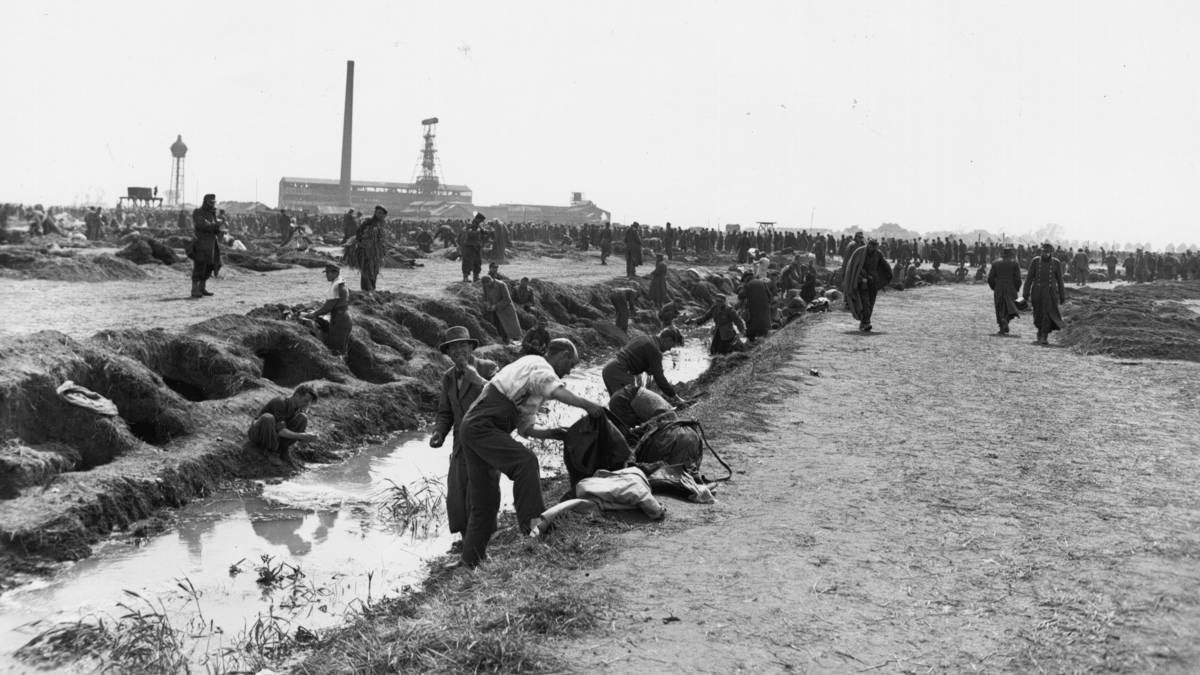
What were the Rheinwiesenlager? The Rheinwiesenlager, or "Rhine Meadow Camps," were a series of temporary prisoner-of-war camps established by the Allies in Germany after World War II. These camps held German soldiers captured during the final stages of the war. Conditions were harsh, with prisoners living in open fields surrounded by barbed wire, often without adequate shelter, food, or medical care. The camps were intended to prevent any resurgence of Nazi forces, but they quickly became overcrowded, leading to significant suffering and death. Understanding the Rheinwiesenlager sheds light on the complexities and harsh realities of post-war Europe.
Key Takeaways:
- The Rheinwiesenlager camps housed millions of German soldiers and civilians in harsh conditions after World War II, sparking controversy and ongoing historical research.
- Despite challenges, former prisoners' personal stories and the legacy of the camps continue to shape post-war Germany and global historical education.
The Rheinwiesenlager Camps: An Overview
The Rheinwiesenlager, or Rhine Meadow Camps, were a series of temporary prisoner-of-war camps established by the Allies in Germany after World War II. These camps housed millions of German soldiers and civilians. Here are some fascinating facts about these camps.
-
Location: The camps were located along the Rhine River in western Germany. They stretched from Remagen to Ludwigshafen.
-
Purpose: Initially, the camps were intended to hold German soldiers who had surrendered to the Allies.
-
Construction: The camps were hastily constructed in April 1945, often using barbed wire and minimal shelter.
-
Capacity: At their peak, the camps held approximately 1.5 to 2 million prisoners.
-
Conditions: Prisoners faced harsh conditions, including exposure to the elements, inadequate food, and limited medical care.
Life Inside the Camps
Life in the Rheinwiesenlager camps was challenging. The prisoners had to adapt to a new, harsh reality.
-
Shelter: Many prisoners had to sleep in the open or in makeshift tents.
-
Food: Rations were scarce, often consisting of little more than bread and watery soup.
-
Health: Disease was rampant due to poor sanitation and overcrowding.
-
Work: Some prisoners were put to work on nearby farms or in rebuilding efforts.
-
Communication: Contact with the outside world was limited, and many prisoners had no idea when they would be released.
The Role of the Allies
The Allies played a significant role in the establishment and management of the Rheinwiesenlager camps.
-
American Control: The U.S. Army was primarily responsible for the camps.
-
British Involvement: The British also managed some of the camps, particularly in the northern regions.
-
French Camps: The French established their own camps for German prisoners in their occupation zone.
-
Guard Duty: Allied soldiers, including Americans, British, and French, guarded the camps.
-
Policy: The Allies initially planned to hold the prisoners until they could be processed and released.
Controversies and Criticisms
The Rheinwiesenlager camps have been the subject of much debate and criticism over the years.
-
Death Toll: Estimates of the number of deaths in the camps vary widely, from 3,000 to 10,000 or more.
-
War Crimes Allegations: Some historians and former prisoners have accused the Allies of committing war crimes due to the harsh conditions.
-
Lack of Documentation: Many records from the camps were lost or destroyed, making it difficult to determine the exact number of deaths.
-
Public Awareness: For many years, the existence of the camps was not widely known or discussed.
-
Historical Debate: Historians continue to debate the extent of the suffering and the responsibility of the Allies.
The Aftermath
The legacy of the Rheinwiesenlager camps continues to be felt today.
-
Release of Prisoners: Most prisoners were released by the end of 1945, although some remained in captivity until 1946.
-
Reintegration: Many former prisoners faced challenges reintegrating into society after their release.
-
Memorials: Several memorials have been established to honor the memory of those who suffered in the camps.
-
Historical Research: Scholars continue to study the camps to better understand this period of history.
-
Public Awareness: Efforts have been made to increase public awareness of the camps and their impact.
Personal Stories
The experiences of individual prisoners provide a unique perspective on life in the Rheinwiesenlager camps.
-
Survivor Accounts: Many former prisoners have shared their stories through interviews, books, and documentaries.
-
Letters Home: Some prisoners were able to send letters to their families, providing a glimpse into their daily lives.
-
Art and Poetry: Some prisoners expressed their experiences through art and poetry created during their captivity.
-
Escape Attempts: There were a few instances of prisoners attempting to escape the camps.
-
Friendships: Despite the harsh conditions, some prisoners formed lasting friendships during their time in the camps.
The Legacy of Rheinwiesenlager
The Rheinwiesenlager camps left a lasting impact on post-war Germany and the world.
-
Historical Memory: The camps are a significant part of Germany's post-war history.
-
Educational Efforts: Schools and universities in Germany and beyond include the camps in their history curricula.
-
Documentaries and Films: Several documentaries and films have been made about the camps, bringing their story to a wider audience.
-
Books and Articles: Numerous books and scholarly articles have been written about the camps, contributing to our understanding of this period.
-
Ongoing Research: Historians and researchers continue to study the camps, uncovering new information and perspectives.
Final Glimpse at Rheinwiesenlager
Rheinwiesenlager, a network of POW camps, held German soldiers post-WWII. These camps, often overlooked, played a significant role in history. Conditions were harsh, with limited shelter and food, leading to many deaths. Despite the Allies' efforts to provide for the prisoners, the sheer number of detainees overwhelmed resources. This period remains a somber chapter, highlighting the complexities of war and its aftermath. Understanding Rheinwiesenlager helps us grasp the broader impacts of WWII on both victors and vanquished. It serves as a reminder of the human cost of conflict and the importance of humane treatment for all, even in times of war. By learning about these camps, we honor those who endured and ensure such hardships are not forgotten. History teaches us valuable lessons, and Rheinwiesenlager is a poignant example of resilience and the need for compassion.
Frequently Asked Questions
Was this page helpful?
Our commitment to delivering trustworthy and engaging content is at the heart of what we do. Each fact on our site is contributed by real users like you, bringing a wealth of diverse insights and information. To ensure the highest standards of accuracy and reliability, our dedicated editors meticulously review each submission. This process guarantees that the facts we share are not only fascinating but also credible. Trust in our commitment to quality and authenticity as you explore and learn with us.


